SooJean Han
Hybrid Conformal Prediction-based Risk-Aware Model Predictive Planning in Dense, Uncertain Environments
Jul 16, 2025Abstract:Real-time path planning in dense, uncertain environments remains a challenging problem, as predicting the future motions of numerous dynamic obstacles is computationally burdensome and unrealistic. To address this, we introduce Hybrid Prediction-based Risk-Aware Planning (HyPRAP), a prediction-based risk-aware path-planning framework which uses a hybrid combination of models to predict local obstacle movement. HyPRAP uses a novel Prediction-based Collision Risk Index (P-CRI) to evaluate the risk posed by each obstacle, enabling the selective use of predictors based on whether the agent prioritizes high predictive accuracy or low computational prediction overhead. This selective routing enables the agent to focus on high-risk obstacles while ignoring or simplifying low-risk ones, making it suitable for environments with a large number of obstacles. Moreover, HyPRAP incorporates uncertainty quantification through hybrid conformal prediction by deriving confidence bounds simultaneously achieved by multiple predictions across different models. Theoretical analysis demonstrates that HyPRAP effectively balances safety and computational efficiency by leveraging the diversity of prediction models. Extensive simulations validate these insights for more general settings, confirming that HyPRAP performs better compared to single predictor methods, and P-CRI performs better over naive proximity-based risk assessment.
FaSTrack: a Modular Framework for Real-Time Motion Planning and Guaranteed Safe Tracking
Mar 13, 2021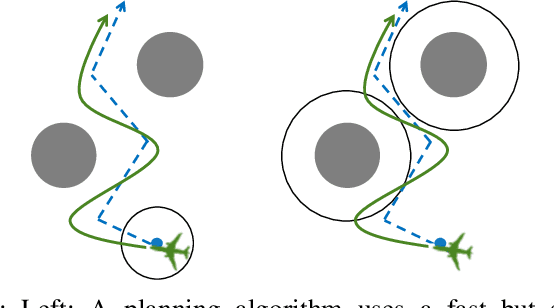
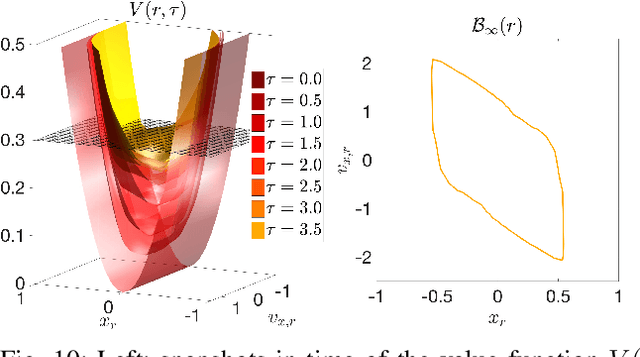
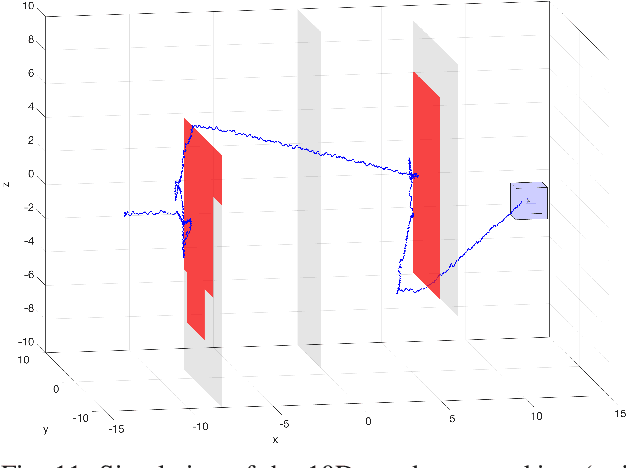
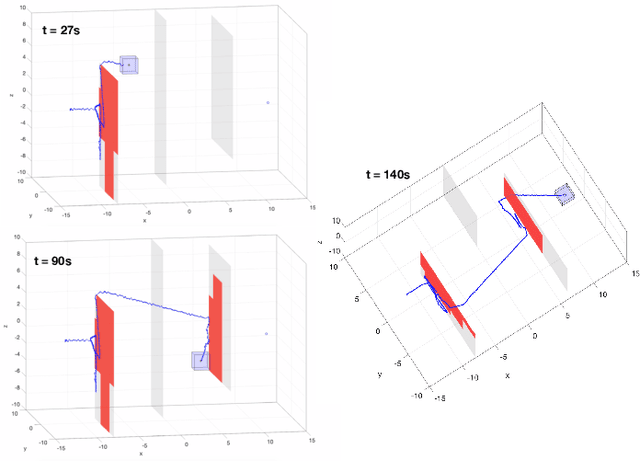
Abstract:Real-time, guaranteed safe trajectory planning is vital for navigation in unknown environments. However, real-time navigation algorithms typically sacrifice robustness for computation speed. Alternatively, provably safe trajectory planning tends to be too computationally intensive for real-time replanning. We propose FaSTrack, Fast and Safe Tracking, a framework that achieves both real-time replanning and guaranteed safety. In this framework, real-time computation is achieved by allowing any trajectory planner to use a simplified \textit{planning model} of the system. The plan is tracked by the system, represented by a more realistic, higher-dimensional \textit{tracking model}. We precompute the tracking error bound (TEB) due to mismatch between the two models and due to external disturbances. We also obtain the corresponding tracking controller used to stay within the TEB. The precomputation does not require prior knowledge of the environment. We demonstrate FaSTrack using Hamilton-Jacobi reachability for precomputation and three different real-time trajectory planners with three different tracking-planning model pairs.
FaSTrack: a Modular Framework for Fast and Guaranteed Safe Motion Planning
Mar 21, 2017
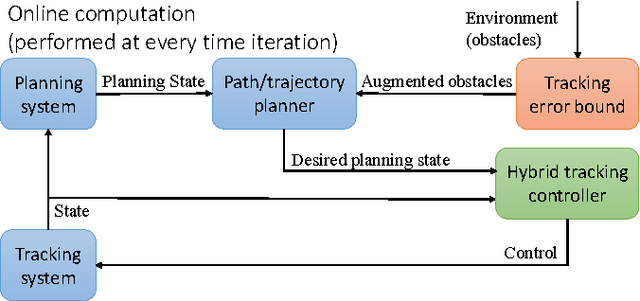
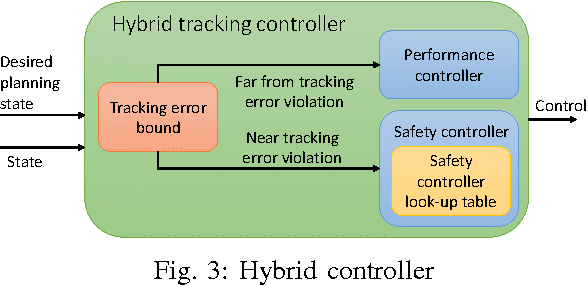
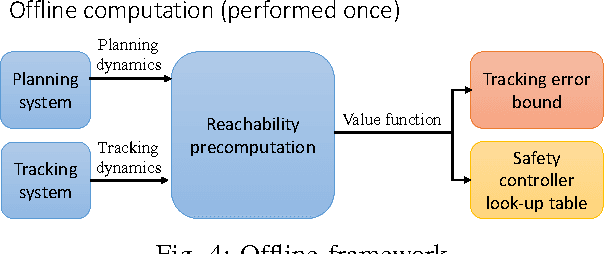
Abstract:Fast and safe navigation of dynamical systems through a priori unknown cluttered environments is vital to many applications of autonomous systems. However, trajectory planning for autonomous systems is computationally intensive, often requiring simplified dynamics that sacrifice safety and dynamic feasibility in order to plan efficiently. Conversely, safe trajectories can be computed using more sophisticated dynamic models, but this is typically too slow to be used for real-time planning. We propose a new algorithm FaSTrack: Fast and Safe Tracking for High Dimensional systems. A path or trajectory planner using simplified dynamics to plan quickly can be incorporated into the FaSTrack framework, which provides a safety controller for the vehicle along with a guaranteed tracking error bound. This bound captures all possible deviations due to high dimensional dynamics and external disturbances. Note that FaSTrack is modular and can be used with most current path or trajectory planners. We demonstrate this framework using a 10D nonlinear quadrotor model tracking a 3D path obtained from an RRT planner.
 Add to Chrome
Add to Chrome Add to Firefox
Add to Firefox Add to Edge
Add to Edge